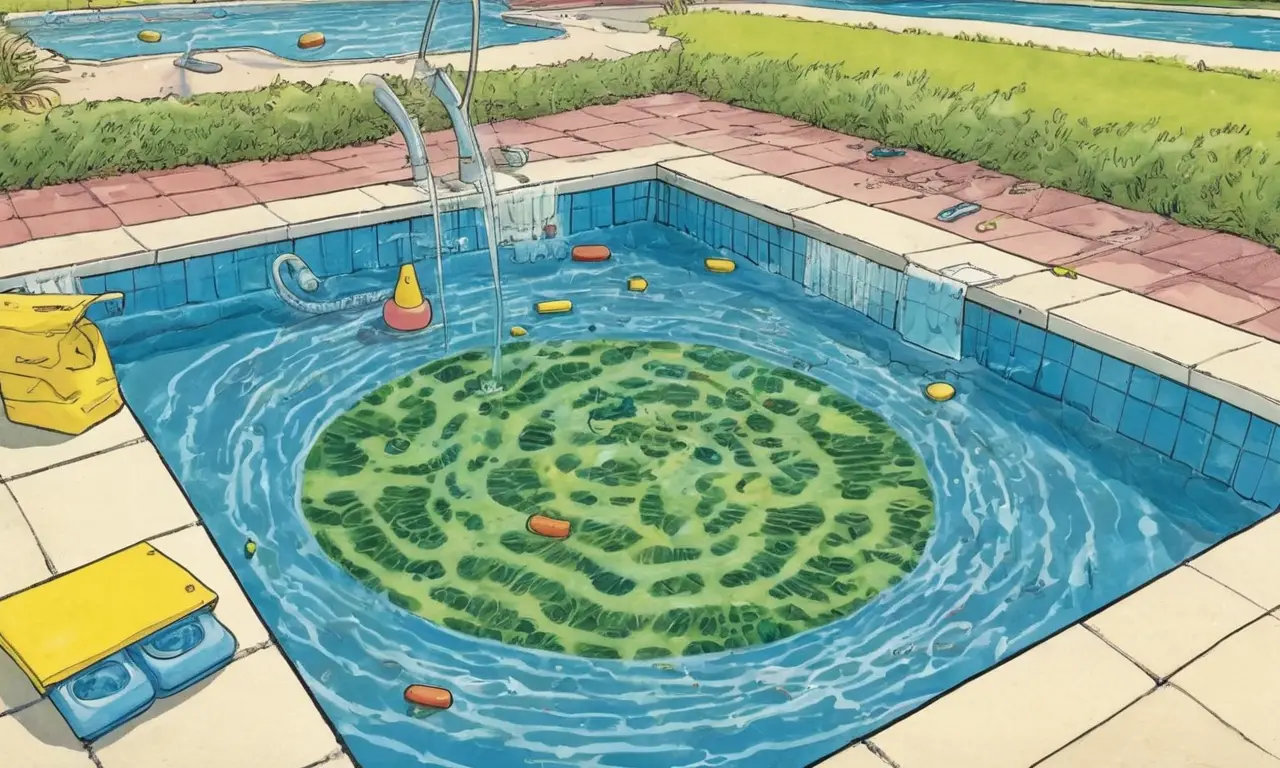
Taking a dip in a cool pool on a hot day is a refreshing way to beat the heat. However, it’s important to remember that jumping into the pool while sweaty can have an impact on water quality. While a quick swim after a workout might not seem like a big deal, the combination of sweat and chlorine can create some unwanted effects. This article will explore how sweat affects your pool water, the science behind it, and tips for maintaining clean and safe swimming conditions.
This article will delve into the specific ways sweat impacts pool water quality, explain the chemistry behind chlorine depletion and cloudiness, and provide practical advice on minimizing the negative effects of sweat. By understanding these factors, you can ensure a refreshing and enjoyable swimming experience while keeping your pool clean and healthy.
Impact of Sweat on Pool Water Quality
Sweat is more than just water; it contains a cocktail of minerals, salts, oils, and even bacteria that can significantly affect your pool’s environment. These impurities disrupt the delicate balance needed for clear, sanitized water. While small amounts of sweat are unlikely to cause major problems, frequent or excessive sweating can lead to noticeable changes in your pool’s appearance and feel.
One of the primary concerns with sweat is its impact on chlorine levels. Chlorine is essential for sanitizing pool water by killing bacteria and algae. However, the minerals and salts present in sweat can react with chlorine, reducing its effectiveness and leading to a decrease in sanitizer levels. This can create an environment where harmful microorganisms can thrive, posing a risk to swimmers’ health.
Chlorine Depletion and Sweat

The chemical reaction between sweat and chlorine is a key factor in understanding how sweat impacts pool water quality. When you jump into the pool while sweaty, the salts and minerals in your perspiration react with the chlorine, forming chloramines. Chloramines are responsible for the unpleasant “chlorine smell” often associated with poorly maintained pools.
Furthermore, the formation of chloramines reduces the amount of free chlorine available to sanitize the water. This means that even if you have adequate chlorine levels initially, sweat can quickly deplete them, leaving your pool vulnerable to bacterial growth and contamination. Regular testing and adjustment of chlorine levels are crucial for maintaining a safe and enjoyable swimming environment.
Cloudiness in Pools Caused by Sweat
Another noticeable effect of sweat on pool water is cloudiness or haze. This occurs when the minerals and oils present in sweat combine with other impurities in the water, forming suspended particles that scatter light. These particles can make the water appear cloudy or milky, reducing visibility and aesthetics.
While some level of cloudiness is normal in pools, excessive cloudiness caused by sweat can indicate a need for increased maintenance. Regularly cleaning the pool filter, skimming debris from the surface, and using clarifying agents can help minimize cloudiness and maintain clear water.
Maintaining Proper Pool Sanitation

Keeping your pool clean and sanitized is essential for preventing the negative effects of sweat and other contaminants. This involves several key steps:
- Regular Testing: Test your pool water regularly (at least twice a week) to monitor chlorine levels, pH balance, alkalinity, and calcium hardness.
- Adjusting Chemicals: Based on test results, adjust chlorine levels, pH, and other chemicals as needed to maintain optimal sanitation.
- Filtration: Run your pool filter for at least 8-12 hours per day to remove debris and impurities from the water.
- Skimming: Regularly skim the surface of the pool to remove leaves, insects, and other debris that can contribute to cloudiness and contamination.
Tips for Reducing Sweat’s Effect on Pools
While it’s impossible to completely eliminate the impact of sweat on your pool, there are several steps you can take to minimize its effects:
- Shower Before Swimming: Taking a quick shower before entering the pool helps remove excess sweat and dirt from your body.
- Limit Sweating in the Pool: Avoid strenuous exercise or activities that cause excessive sweating while swimming.
- Use a Swim Cover: When not in use, cover your pool with a swim cover to reduce evaporation and minimize the introduction of debris and contaminants.
- Shock Your Pool Regularly: Shocking your pool with a chlorine-based shock treatment once a week helps kill bacteria and algae, reducing the impact of sweat and other organic matter.
Conclusion
Swimming in a pool while sweaty can have a noticeable impact on water quality. While occasional sweating is unlikely to cause major problems, frequent or excessive sweating can lead to chlorine depletion, cloudiness, and an increased risk of bacterial growth. By understanding the science behind these effects and implementing proper maintenance practices, you can enjoy a refreshing and safe swimming experience while keeping your pool clean and healthy. Remember to shower before entering the pool, limit strenuous activity in the water, and regularly test and adjust your pool’s chemical levels for optimal sanitation.
